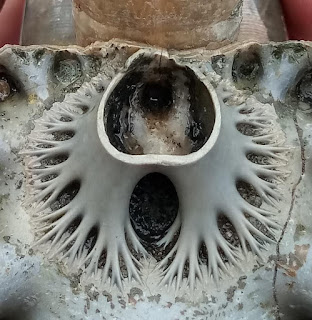It is one of four living species of the order Sirenia, which also includes three species of manatees — their large, fully aquatic, mostly herbivorous marine mammal cousins.
The closest living relatives of sirenians are elephants. Manatees evolved from the same land animals as elephants over 50 million years ago.
If not for natural selection, we might have a much more diverse showing of the Sirenia as their fossil lineage shows a much more diverse group of sirenians back in the Eocene than we have today. It is the only living representative of the once-diverse family Dugongidae; its closest modern relative, Steller's sea cow, was hunted to extinction in the 18th century.
While only one species of the dugong is alive today – a second, the Steller's sea cow only left this Earth a few years ago. Sadly, it was hunted to extinction within 27 years of its discovery – about 30 species have been recovered in the fossil record
The first appearance of sirenians in the fossil record was during the early Eocene, and by the late Eocene, sirenians had significantly diversified. Inhabitants of rivers, estuaries, and nearshore marine waters, they were able to spread rapidly.
The most primitive sirenian known to date, Prorastomus, was found in Jamaica, not the Old World; however, more recently the contemporary Sobrarbesiren has been recovered from Spain. The first known quadrupedal sirenian was Pezosiren from the early Eocene.The earliest known sea cows, of the families Prorastomidae and Protosirenidae, are both confined to the Eocene and were about the size of a pig, four-legged amphibious creatures.
By the time the Eocene drew to a close, the Dugongidae had arrived; sirenians had acquired their familiar fully aquatic streamlined body with flipper-like front legs with no hind limbs, powerful tail with horizontal caudal fin, with up and down movements which move them through the water, like cetaceans.
The last of the sirenian families to appear, Trichechidae, apparently arose from early dugongids in the late Eocene or early Oligocene. The current fossil record documents all major stages in hindlimb and pelvic reduction to the extreme reduction in the modern manatee pelvis, providing an example of dramatic morphological change among fossil vertebrates.
Since sirenians first evolved, they have been herbivores, depending on seagrasses and aquatic angiosperms, tasty flowering plants of the sea, for food. To the present, almost all have remained tropical — with the notable exception of Steller's Sea Cow — marine, and angiosperm consumers. Sea cows are shallow divers with large lungs. They have heavy skeletons to help them stay submerged; the bones are pachyostotic (swollen) and osteosclerotic (dense), especially the ribs which are often found as fossils.
Eocene sirenians, like Mesozoic mammals but in contrast to other Cenozoic ones, have five instead of four premolars, giving them a 3.1.5.3 dental formula. Whether this condition is truly primitive retention in sirenians is still under debate.
Although cheek teeth are relied on for identifying species in other mammals, they do not vary to a significant degree among sirenians in their morphology but are almost always low-crowned —brachyodont — with two rows of large, rounded cusps — bunobilophodont. The most easily identifiable parts of sirenian skeletons are the skull and mandible, especially the frontal and other skull bones. With the exception of a pair of tusk-like first upper incisors present in most species, front teeth — incisors and canines — are lacking in all, except the earliest sirenians.




































